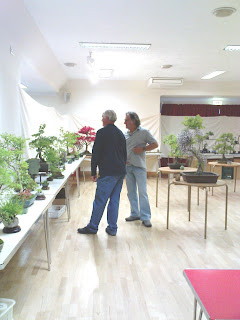 Marketing clever? The RHS has often seemed to me like one of those aircraft carriers: monolithic and unable to change its course at the drop of a hat. Yet once in a while, they can actually respond in a manner that seems almost timely.
Marketing clever? The RHS has often seemed to me like one of those aircraft carriers: monolithic and unable to change its course at the drop of a hat. Yet once in a while, they can actually respond in a manner that seems almost timely.In a previous post I pondered the implications of the RHS' recent vacancy advert for a person to head their Membership Development. According to their ad, the RHS is 'undergoing a major transformation... with a focus on growth and cultural change.' I did find it significant that, within the text of their ad, the RHS linked the increase of their membership very closely with their funding.
Recently, at their most prestigious flower show, the RHS had elected to allow James May to display a garden without a single plant in it. Which caused no small amount of talk, dare I say it. But controversial talk is better than no talk, right? And as the plasticine garden is actually part of a greater TV series that Mr May is running, then Chelsea will be talked about even after the gardening show season is over, and to a potentially wider audience than purely horticultural folk. After all, Mr May is better known for shifting gears rather than rolling wheelbarrows. Not too bad going in the awareness stakes, is it?
I can understand the backlash from the gardening community. Just as I can understand those who say it was a breath of fresh air. However, honestly, the light bulb that went off in my (jaded) marketing brain was that of concepts beloved of all marketers: Greater Publicity. Increased Budget. Better Funding.
Pundits opined that ticket sales were down (apparently not selling out as quickly before the show) and less exhibitors (the Great Pavilion seeming not as full as in previous years) were supporting the Chelsea Flower Show due to the recent hard winter and the pervasive credit crunch.
Perhaps that could have been the instigator. Perhaps the Membership Development exec needs to get on board really quickly before they run out of quirky non-garden talking points. Or perhaps Mr May's crusade to wean children away from the dreaded Xbox just found its perfectly virtuous alliance?
Have I just hit the nail on the head here? Is this why the BBC gives so little air time to bonsai during Chelsea coverage? What does it take to be controversial enough for you lot, then? Or do we have to jump on some bandwagon associated with: (1) Better Funding. (2) A-List Celebrities. (3) Do-gooder Causes. (4) Better Funding.
Note: The picture above was taken on the Sunday afternoon before the opening day. Getting close enough to capture the detail of the work was a relatively insurmountable challenge, given the amount of people working and filming the activity.



















































